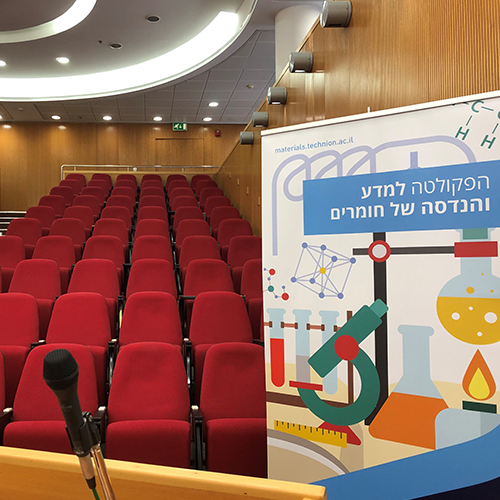
Dr. Vasily A. Lebedev
21/08/2025
David Wang Auditorium, 3rd Floor, Dalia Maydan Bldg.
13:30
With the growing popularity of automated processing tools, including the open-source libraries for Python, there is an opportunity for researchers to significantly improve the performance of the raw data processing routines, to augment the results with the extensive usage of metadata, and to gather more information from the same datasets then in the case of more classic approaches. However, sometimes these tools are focused on the solution of very specific tasks, while generalized workflow chains could provide additional opportunities for a wider range of applications and solutions.
In the first part of the seminar, I will demonstrate a use case of the extensive data processing for the high resolution STEM datasets of PbZrO3 thin films, specifically for the phase identification of the nanometer-sized inclusions. The datasets were acquired using the NION UltraSTEM200 instrument at AML, Trinity College Dublin. The combined use of open-source software and free databases, including COD, allowed us to highlight and distinguish instrument-related and sample-related features, to assess the frame precision achieved, to probe the phase composition of nanometer-sized inclusions and to quantitatively compare it with the simulated STEM images. It has been confirmed that the obtained films demonstrate high structural and compositional continuity with a minor amount of defects and inclusions of o-ZrO2, Ortho-I phase (Fig.1) [1].
During the second part, I will provide a few examples of metadata-driven approach to the multiframe datasets with the low signal intensity, and some experimental applications. Corresponding frames with X-ray energy loss spectra were recorded during the pump-probe experiment of time-resolved resonant inelastic X-ray scattering (trRIXS). Experimental trRIXS datasets were acquired at FERMI FEL, MagneDyn beamline – proposals 20234034, 20234065, and at EuXFEL, SCS, during the user-assisted commissioning – proposal p2769 on the spin dynamics in photoexcited antiferromagnetic Mott insulators (NiO, La2CuO4) [2]. The statistical approach to the metadata descriptors – such as fast intensity monitors, inline spectrometers etc – allowed us to develop data-driven thresholds, to improve signal-to-noise ratio of the RIXS signal acquired, and to address the fluctuations of pump-probe delay and the incoming wavelength with time. This approach seems to be interdisciplinary applicable to the variety of use cases with sparse low-dose multiframe signal accompanied with the rich metadata.

Fig.1 An example of the HAADF-STEM frame of the inclusion observed in PbZrO3, the proposed refinement model, and the vector map of differences for the case of da=db=0
- Haddad M.H. et al, ACS Omega (2025), doi 10.1021/acsomega.5c04818
- Merzoni G. et al, arXiv preprint (2025), arXiv:2504.16653
This work was enabled by the support of many colleagues, collaborators, and developers of open-source routines. PbZrO3-related part of work was supported by SFI/21/US/3785; experiments at FERMI FEL were supported by LaserLab-Europe (30331, 34192)


